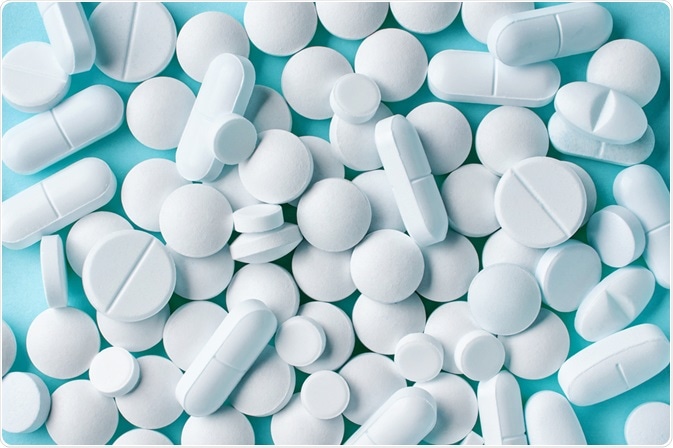Transmission Raman Spectroscopy is a variation of transmission Raman spectroscopy that is often used to probe the bulk properties of samples that scatter diffusely. It is particularly useful for the analysis of materials that are opaque or turbid.
Skip to:
 MaraZe | Shutterstock
MaraZe | Shutterstock
Understanding Transmission Raman Spectroscopy
The basic principle of Transmission Raman Spectroscopy is that the excitation laser is passed through the sample using the from one side and then the Raman signal is collected from the other side of the sample. In cases where the sample is opaque, the light passes through the sample via the process of scattering.
Transmission Raman Spectroscopy uses several photons, allowing an entire entity to be analyzed, such as a pharmaceutical tablet. This is known as bulk analysis.
Comparing Transmission Raman Spectroscopy and conventional Raman spectroscopy
Conventional Raman spectroscopy is based on the data collected from back-scattering. This often limits the collected information to the surface of tablets and capsules. However, the surface often may not represent the properties of the bulk in case of capsule or tablet, even in cases where there are no coatings. Thus, transmission Raman spectroscopy is a better indicator of the bulk properties of the sample.
Advantages of Transmission Raman Spectroscopy
Non-destructive testing
Using TRS, the quantitative analysis of samples (such as tablets, capsules, powders, suspensions and liquids) can be performed in a non-destructive manner. The method can also be used to test the uniformity of content in a non-destructive manner.
Imaging at greater depths
Transmission Raman Spectroscopy can probe sample depths even greater than 10 millimeters of the sample. This can be done by shining light on one side and collecting the transmitted light from the other side - thus, the light that is collected represents the entire sample mixture, rather than surface properties. This method is more sensitive, more accurate and faster, and can quantitatively measure the sample.
Indifference to surface coatings and surface properties
In contrast to the near-infrared Raman spectroscopy, Transmission Raman Spectroscopy measurements do not vary with changes in the surface properties due to the presence of coatings or shells. Thus, no additional sample preparation is required. Also, Transmission Raman Spectroscopy is not dependent on changes in the sample size, compaction, or presence of moisture. Therefore, the measurements are robust, reliable, and less prone to errors caused by sample fluctuations.
Transmission Raman Spectroscopy in the pharmaceutical industry
Transmission Raman Spectroscopy is a fast, non-destructive, quantitative analysis technique that has proved to be highly useful for the pharmaceutical industry. A critical quality control step in the development of pharmaceuticals is testing the uniformity of content.
Although high-performance liquid chromatography (HPLC) represents the global standard in this procedure, Transmission Raman Spectroscopy has been shown to improve workflow, reduce testing time, and increase staff resources. It is also much cheaper than HPLC.
The use of Transmission Raman Spectroscopy in life sciences is not limited to pharmaceuticals. It is also used in polymorph content analysis, stability testing, and validating manufacturing processes. The measurements with Transmission Raman Spectroscopy are in the range of seconds per sample. This means that information about the quantities and chemical composition of a particular sample can be gathered in a matter of minutes.
Limitations of Transmission Raman Spectroscopy
As this method is insensitive to surface coatings, particle size, and orientation, in cases where there is a need to differentiate the sample based on these parameters, transmission Raman spectroscopy may not be a suitable tool. Other methods should be considered instead.
Sources
- Horiba. What is transmission Raman spectroscopy, or TRS? horiba.com.
- Agilent. Transmission Raman Spectroscopy (TRS). agilent.com.
- Development of Transmission Raman Spectroscopy towards the in line, high throughput and non-destructive quantitative analysis of pharmaceutical solid oral dose. Analyst. doi/org/0.1039/C4AN01798F.
Further Reading